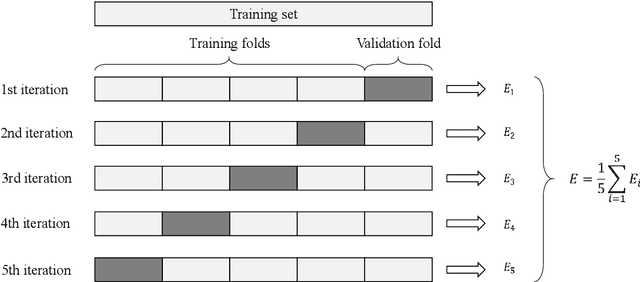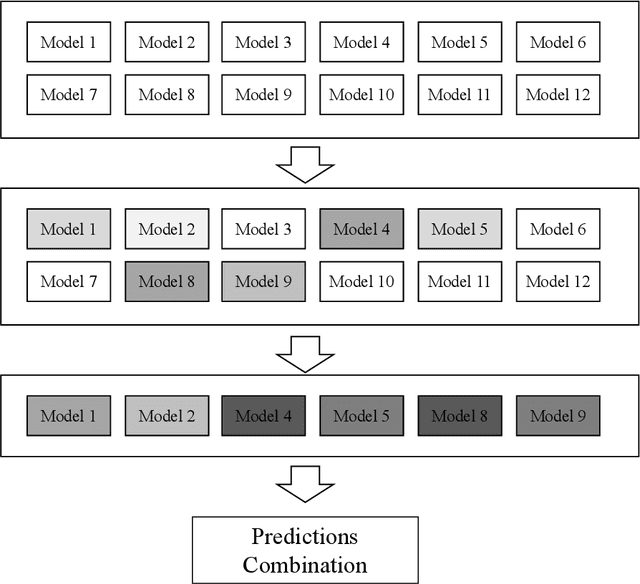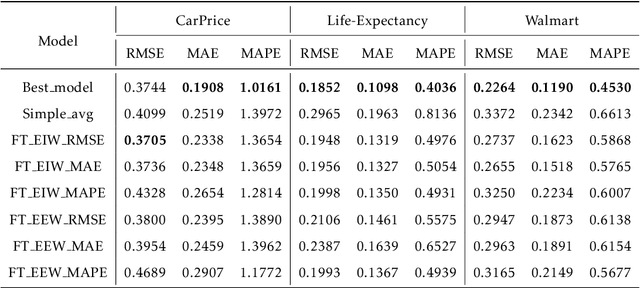Enhancing the Diversity of Predictions Combination by Negative Correlation Learning
Paper and Code
Apr 06, 2021



Predictions combination, as a combination model approach with adjustments in the output space, has flourished in recent years in research and competitions. Simple average is intuitive and robust, and is often used as a benchmark in predictions combination. However, some poorly performing sub-models can reduce the overall accuracy because the sub-models are not selected in advance. Even though some studies have selected the top sub-models for the combination after ranking them by mean square error, the covariance of them causes this approach to not yield much benefit. In this paper, we suggest to consider the diversity of sub-models in the predictions combination, which can be adopted to assist in selecting the most diverse model subset in the model pool using negative correlation learning. Three publicly available datasets are applied to evaluate the approach. The experimental results not only show the diversity of sub-models in the predictions combination incorporating negative correlation learning, but also produce predictions with accuracy far exceeding that of the simple average benchmark and some weighted average methods. Furthermore, by adjusting the penalty strength for negative correlation, the predictions combination also outperform the best sub-model. The value of this paper lies in its ease of use and effectiveness, allowing the predictions combination to embrace both diversity and accuracy.
 Add to Chrome
Add to Chrome Add to Firefox
Add to Firefox Add to Edge
Add to Edge